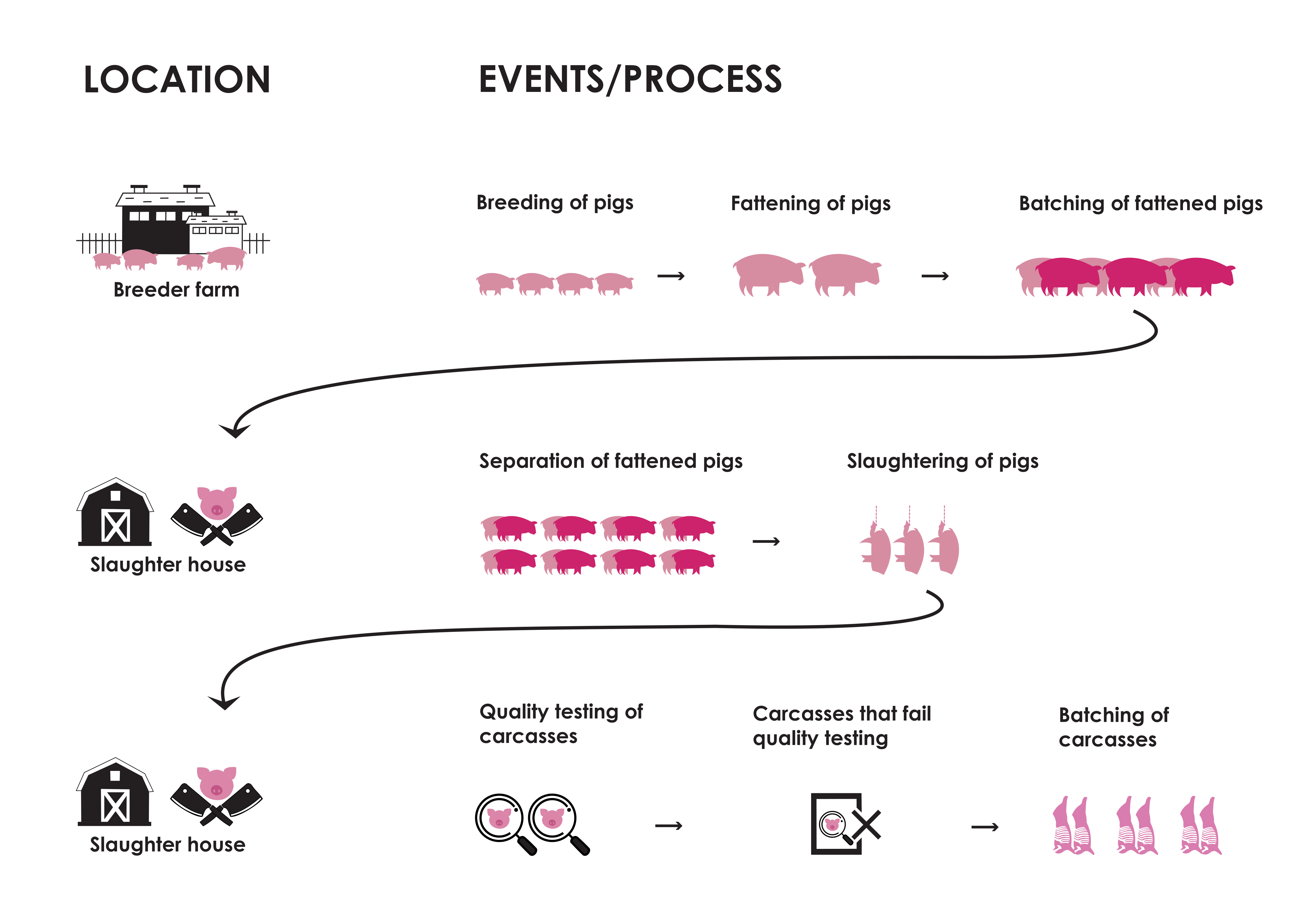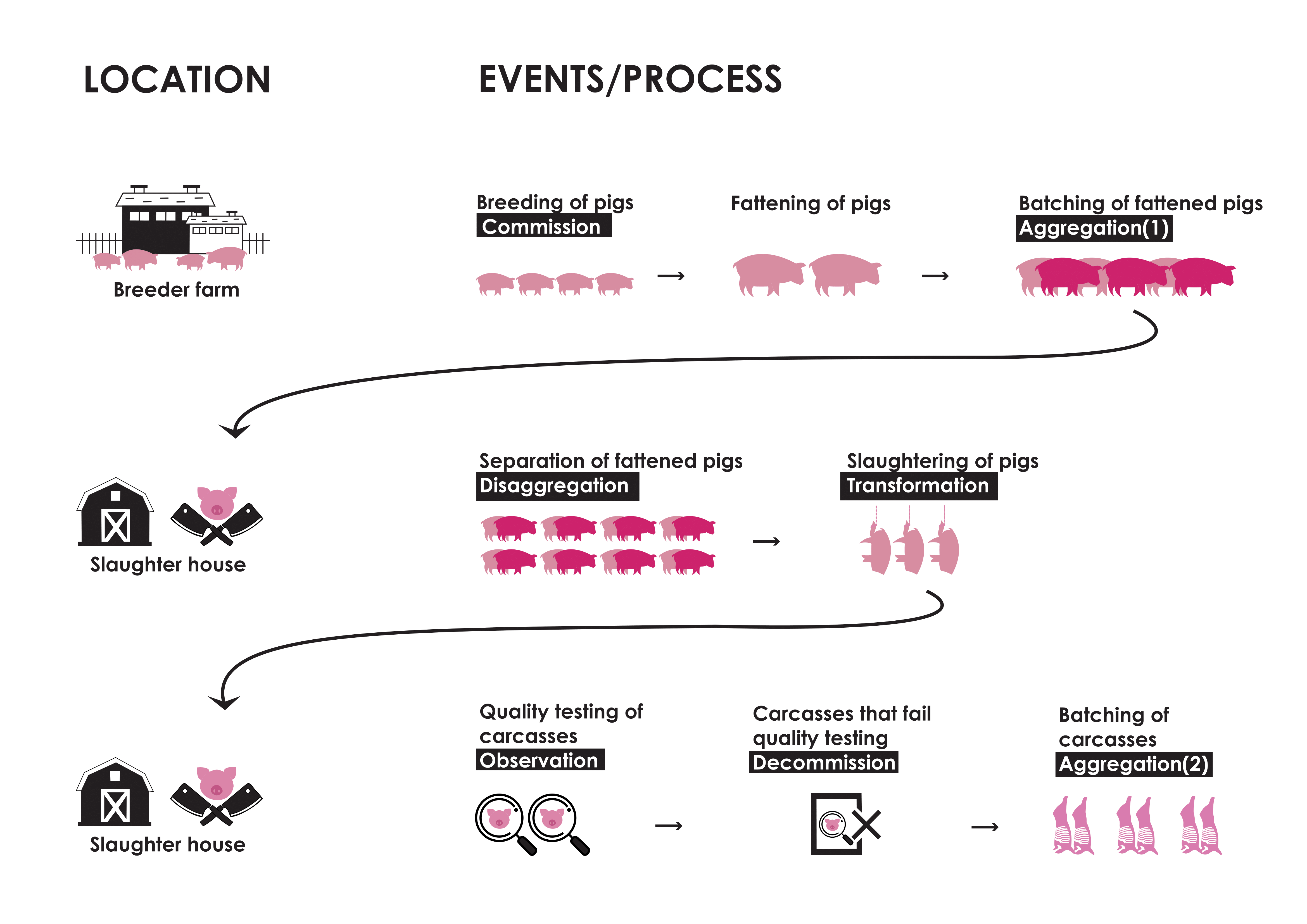Introduction
GS1 is a non-profit organization that designs and maintains global standards for business communications. The EPCIS (Electronic Product Code Information Services) is a type of GS1 standard that facilitates interoperability of data among trading partners in a supply chain. This feature of the GS1 EPCIS standard improves visibility and traceability in the supply chain – two crucial aspects for all the trading partners in a supply chain.
The GS1 EPCIS standard is industry agnostic and can be applied to retail, e-commerce, food, clothing and apparel, healthcare, pharma, etc. and is gaining adoption rapidly. For eg: IBM uses GS1 EPCIS standard to format the data being transmitted to their IBM Food Trust™ blockchain network.
Why GS1 EPCIS Standard?
GS1 created this standard with an objective of connecting disparate applications to create and share event data within and across companies. Implementing the GS1 EPCIS standard enables the following in a supply chain:-
- End-to-end visibility: When systems across organizations can inter-operate and interact with each other, it breaks down information silos and results in increased visibility. This makes end-to-end visibility possible.
- Proactive error monitoring: Once you break down information silos, you can catch issues early in your supply chain — keeping the “bullwhip effect” in check. You can setup alerting systems that notify if something goes wrong across the entire supply chain resulting in proactive error monitoring.
- Insight into the data from the entire supply chain: Once you have access to data from the entire chain you gain insights. Insight into unoptimized processes, the trading partner that is not living up to its SLA (Service Level Agreement) and so on.
Dimensions of EPCIS
At the heart of the GS1 EPCIS standard is EPCIS events. An EPCIS event represents a real-world event that happens in a supply chain. The EPCIS event tells us “what happened and the products involved”, “where it happened”, “when it happened” and finally “why it happened”.
Here is a close look at the four dimensions of an EPCIS event (What, Where, When and Why),
- What – This provides information on the action performed on a product. An example would be scanning of an SKU.
- Where – This indicates the location where the event took place and also the location where the product(s) would end up post the event.
- When – This describes the date and time of the event.
- Why – This describes the reasons behind the occurrence of the event. (1) The business step of which this event was a part (2) A reference to business transactions (such as a purchase order) that define the context of this event. (3) Disposition – Indicating the condition/status (sellable, non-sellable, in transit, etc) of the product.
Types of EPCIS events
In the GS1 EPCIS realm, there are six standard EPCIS event types that represent real-world events; Commission, Aggregation, Disaggregation, Observation, Transformation, and Decommission. In each of the event type, all the four dimensions (What, Why, Where, When) are recorded.
For the ease of understanding, let us consider the pork value chain.

- Commission – An event signifying the creation of an object. An example, the birth of piglets in a pork value chain — that’s commissioning.
- Transformation – An event signifying an irreversible transformation of an object. An example would be slaughtering of the pigs into carcasses. You can’t reverse it. That’s a transformation.
- Aggregation – An event signifying grouping of objects. For example, batching of the pigs for transportation.
- Disaggregation – An event signifying the ungrouping objects to a smaller group or individual objects. For example, separation of the pigs.
- Observation – An event signifying an observation, such as quality testing of the carcasses.
- Decommission – An event signifying deletion of an object. Carcasses that do not pass the quality test are discarded and this event can be represented as a decommissioning.
Let’s take a close look at our example pork value chain to see how the steps in the chain can be represented as GS1 EPCIS events.
-
Birth of piglets – Commission
In our example, the birth of piglets is represented as a commission event
What– The batch/lot number/serialized IDs of the piglets are the physical entities that are commissioned here.
Where– The breeder farm.
When– The date and time when the piglets are born.
Why– In our example, the birth of piglets is not part of any business process yet and hence the why dimension has no value. -
Batching of fattened pigs – Aggregation
In this step, the fattened pigs are grouped for transporting them to the slaughterhouse.
What-The batch/lot number/serialized IDs of the fattened pigs that underwent aggregation.
Where– The breeder farm.
When– The date and time when the fattened pigs are grouped.
Why– Business step – Loading; Business transactions – The purchase order from the slaughterhouse. -
Separation of pigs – Disaggregation
Once the pigs reach the slaughterhouse, they are separated for slaughtering.
What-The batch/lot number of the pigs that underwent disaggregation.
Where– The Slaughterhouse.
When– The date and time when the fattened pigs are separated.
Why– Business step – Unloading; Business transactions – The purchase order from the slaughterhouse & the shipment notification from the farm. -
The slaughtering of pigs – Transformation
The pigs are slaughtered, and they are transformed into carcasses. A transformation always has a set of input objects with a set of transformed output objects.
What– Input objects are the pigs and the transformed output objects are the carcasses.
Where– The Slaughterhouse.
When– The date and time when the pigs are slaughtered.
Why– Business transactions – The shipment notification from the farm & the purchase order from the packaging plant. -
Quality testing of carcasses – Observation
An observation is made on the quality of the carcasses.
What– The batch/lot number/serialized IDs of the carcasses tested for their quality.
Where– The Slaughterhouse.
When– The date and time when the carcasses are checked for quality.
Why– Business step – Inspecting; Business transactions – The purchase order from the packaging plant. -
Carcasses that fail quality testing – Decommission
Products that have failed the quality tests are destroyed or thrown out of the process
What– The batch/lot number/serialized IDs of the carcasses that did not pass the quality test.
Where– The Slaughterhouse.
When– The date and time when the batch of carcasses are decommissioned.
Why– Business step – Decommissioning; Business transactions – The purchase order from the packaging plant. -
Batching of carcasses – Aggregation ( 2 )
Once the carcasses pass the quality test are batched and sent to the packaging plant.
What– The carcasses that pass the quality test are packed.
Where– The Slaughterhouse.
When– The date and time when the carcasses are batched for transportation.
Why– Business step – Loading; Business transactions – The purchase order from the packaging plant.
Let us relook at the pork value chain to have a clearer idea:
Summarizing:
- The EPCIS GS1 standard enables interoperability of data and hence creates greater visibility and traceability between business partners across the supply chain.
- The EPCIS GS1 is used across many supply chain industries.
- Created by GS1 with the objective of connecting disparate applications to create and share visibility event data within and across companies.
- An EPCIS event is a structure that represents real-world events shareable among trading partners.
- GS1 EPCIS events communicate the What (The object involved), Where (The location), When (The date and time) and Why (The business step) of an event.
- In the GS1 EPCIS realm there are six standard events – Commission, Aggregation, Disaggregation, Observation, Transformation, and Decommissioning.
Further reads
A comprehensive guide on how GS1 EPCIS is used in IBM Food Trust. [Link]
GS1 EPCIS 1.2 official documentation [ Link]
GS1 CBV official documentation [Link]
IBM Food Trust Blockchain Integration Guide
Reach out to the author of this blog at hello@byteally.com, and feel free to mail your comments or suggestions.

